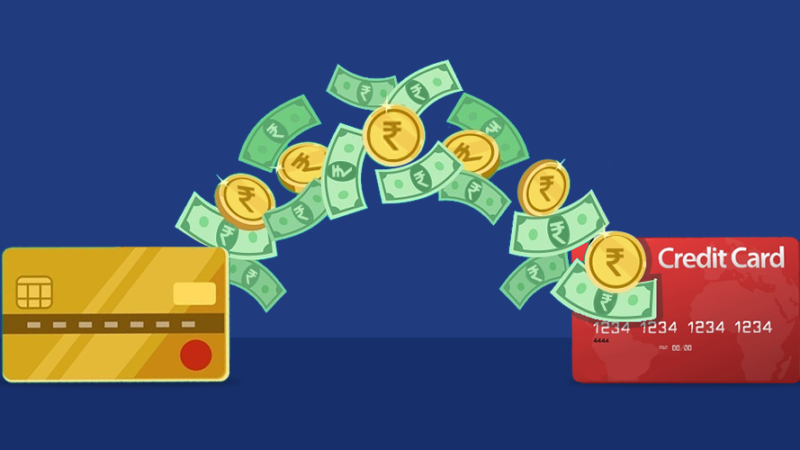Choosing the right credit card requires careful consideration. Consider the following factors: Evaluate your spending habits to find a card with suitable rewards or cashback programs. Assess your credit score to determine eligibility for different cards. Compare annual fees, interest rates, and penalty fees to find a card that aligns with your financial goals. Consider additional perks like travel insurance or purchase protection. Read the terms and conditions carefully, ensuring you understand the card’s benefits, limitations, and potential hidden fees. Finally, research customer reviews and ratings to gauge overall satisfaction and customer service quality.

Assess Your Spending Habits
Assessing your spending habits is an important step in choosing the right credit card.
Consider the following aspects:
Categories of Spending: Identify your primary spending categories, such as groceries, dining out, travel, or gas. Look for credit cards that offer higher rewards or cashback rates for these specific categories.
General Spending: Evaluate your overall spending patterns. If you make a wide variety of purchases, a credit card with a flat-rate cashback or rewards program may be more suitable.
Frequency of Use: Determine how often you plan to use the credit card. If you intend to use it for most of your purchases, a card with a generous rewards program or bonus offers may be beneficial.
Budgeting: Consider your budgeting preferences. If you prefer to have a set credit limit and avoid overspending, a credit card with a lower limit or spending control features might be preferable.
By understanding your spending habits, you can narrow down credit card options that align with your specific needs, maximizing the rewards or benefits you can enjoy based on your typical expenses.
Evaluate Your Credit Score
Evaluating your credit score is a crucial step in choosing the right credit card.
Here’s what to consider:
Know Your Credit Score: Obtain your credit score from credit bureaus or reputable online platforms. Understanding your creditworthiness helps determine the type of credit cards you’re eligible for.
Credit Card Requirements: Research credit cards that align with your credit score range. Some cards are tailored for individuals with excellent credit, while others cater to those with fair or limited credit history.
Impact on Interest Rates: Your credit score affects the interest rates you’ll be offered. Higher scores often qualify for lower interest rates, potentially saving you money in the long run.
Building Credit: If you have a limited credit history or a low score, consider credit cards designed to help build or rebuild credit. These cards may have lower credit limits and fewer rewards but can be a stepping stone toward better credit.
Understanding your credit score enables you to select credit cards that match your creditworthiness, increasing your chances of approval and potentially accessing better terms and benefits.
Compare Fees and Interest Rates
When choosing a credit card, comparing fees and interest rates is crucial.
Here’s what to consider:
Annual Fees: Some credit cards charge an annual fee for card membership. Consider whether the benefits and rewards offered outweigh the cost of the fee. If you don’t plan to use the card extensively or the benefits don’t justify the fee, look for cards without an annual fee.
Interest Rates: Compare the Annual Percentage Rate (APR) of different credit cards. Lower APRs can save you money on interest charges if you carry a balance. However, if you pay your balance in full each month, the interest rate may be less of a concern.
Penalty Fees: Familiarize yourself with the penalty fees charged by the credit card issuer. These fees may include late payment fees, over-limit fees, or cash advance fees. Be aware of the potential charges and consider cards with lower penalty fees or more lenient terms.
Foreign Transaction Fees: If you frequently travel abroad or make purchases in foreign currencies, consider cards with low or no foreign transaction fees. Such fees can add up quickly and impact your overall costs.
Balance Transfer Fees: If you’re considering transferring balances from other credit cards, check the balance transfer fees associated with the new card. Balance transfer fees are usually a percentage of the amount transferred, so compare the fees to the potential interest savings to make an informed decision.
By comparing the fees and interest rates of different credit cards, you can choose a card that aligns with your financial goals and minimizes unnecessary costs.
Consider Rewards and Cashback Programs
Considering rewards and cashback programs is important when choosing a credit card.
Here are key points to keep in mind:
Types of Rewards: Evaluate the types of rewards offered by credit cards, such as cashback, travel rewards, points, or miles. Choose rewards that align with your preferences and lifestyle.
Rewards Categories: Some credit cards offer higher rewards or cashback rates for specific categories like groceries, dining, or gas. If you spend heavily in certain areas, look for cards that provide enhanced rewards for those categories.
Redemption Options: Understand how you can redeem the earned rewards. Some cards offer flexible redemption options, allowing you to convert rewards into cash, statement credits, travel bookings, or merchandise. Choose a card that offers redemption options that suit your needs.
Introductory Offers: Check for any introductory bonuses or sign-up offers. These can include bonus points, cashback, or airline miles that you can earn by meeting certain spending requirements within a specified period. Introductory offers can provide a boost to your rewards earnings.
Rewards Structure: Evaluate the simplicity or complexity of the rewards structure. Some cards offer a flat rate of cashback or rewards on all purchases, while others have tiered structures or rotating categories. Consider your preference for simplicity or willingness to manage category-specific spending.
By considering rewards and cashback programs, you can select a credit card that allows you to earn valuable benefits and maximize your rewards based on your spending patterns and preferences.
Read and Understand the Terms and Conditions
Reading and understanding the terms and conditions of a credit card is crucial before making a decision.
Here’s what to focus on:
Interest Rates and Fees: Pay attention to the APR for purchases, balance transfers, and cash advances. Understand the different types of fees, including annual fees, late payment fees, balance transfer fees, and foreign transaction fees.
Grace Period: Determine if the card offers a grace period for purchases, during which no interest is charged if the balance is paid in full by the due date. Know the length of the grace period and any conditions that may affect its applicability.
Credit Limit: Review the credit limit assigned to the card. Understanding your credit limit can help you manage your spending and avoid potential over-limit fees.
Penalty Terms: Familiarize yourself with the penalties for late payments, exceeding the credit limit, or returned payments. Understand the consequences and potential impact on your credit score.
Rewards Program Details: If the card offers rewards or cashback programs, carefully read the terms related to earning, redeeming, and expiration of rewards. Note any limitations or restrictions on eligible purchases or redemption options.
Reading and understanding the terms and conditions ensures that you are fully aware of the card’s terms, fees, and potential limitations. It allows you to make an informed decision and avoid surprises or misunderstandings in the future.





